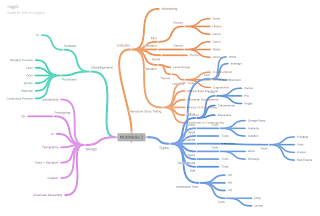Annotated Bibliography
coogle
1.
Richard Cobbett (2017) Our comprehensive guide to PC RPGs spanning four decades - from Dungeon to The Witcher 3, The History of RPGs. PC Gamer.
The beginnings of Role Playing Games, such as the board game, Dungeons and Dragons(1974) and how the first RPG video games came to be, from the 70's up until modern day. Starting off as a board game to 2D PC games only being available in Universities to modern 3D behemoths such as Fallout, The Witcher, Elder Scrolls etc. Showcasing how the genre advanced both in mechanics, graphics and storytelling as the years went on.
2.
Bryant Francis (2015) Designing difficulty in role-playing games, Gamasutra.
Studying the work of veteran game designers and how they designed difficulty in games. Comparing the thinking of old versus new game designers and how when designing the difficulty for games, you should think about what the player can do rather what the game can do.
3.
Mike Stout (2016) A Beginner's Guide to Designing Video Game Levels. tutsplus.com
A game developer's personal experience in designing levels for video games, divided into steps. Looking at the limitations, brainstorming the structure, using diagrams to lay out areas, rough maps and finishing the design are the key steps in creating a level. Of course once you start creating a level in an engine you're going to change certain aspects, but having a solid foundation makes the job much easier.
4.
Petri Lankoski (2002) Character Design Fundamentals for Role-Playing Games, Södertörn University, researchgate.net.
When creating a character it's important to engage the player in a way that they experience the game as that character. Character interpretation requires character understanding. A well defined character needs a well defined goal. Balancing the power of the player and turning forces against each other, it is important that the player has something to do.
Source: https://www.researchgate.net/profile/Petri_Lankoski2/publication/200010276_Character_Design_Fundamentals_for_Role-Playing_Games/links/54eb0aa20cf27a6de115daae.pdf
5.
David Thue, Vadim Bulitko, Marcia Spetch, Eric Vasylishen, (2007) Interactive Storytelling: A Player Modelling Approach, University of Alberta.
Creating an interactive story can be based of user experience and user models. Using a system called "PaSSAGE", one can use a player model which makes decisions in an interactive story. Then the game is tested by users and date is collected.
Source: http://www.aaai.org/Papers/AIIDE/2007/AIIDE07-008.pdf
When creating a character it's important to engage the player in a way that they experience the game as that character. Character interpretation requires character understanding. A well defined character needs a well defined goal. Balancing the power of the player and turning forces against each other, it is important that the player has something to do.
Source: https://www.researchgate.net/profile/Petri_Lankoski2/publication/200010276_Character_Design_Fundamentals_for_Role-Playing_Games/links/54eb0aa20cf27a6de115daae.pdf
5.
David Thue, Vadim Bulitko, Marcia Spetch, Eric Vasylishen, (2007) Interactive Storytelling: A Player Modelling Approach, University of Alberta.
Creating an interactive story can be based of user experience and user models. Using a system called "PaSSAGE", one can use a player model which makes decisions in an interactive story. Then the game is tested by users and date is collected.
Source: http://www.aaai.org/Papers/AIIDE/2007/AIIDE07-008.pdf

Comments
Post a Comment